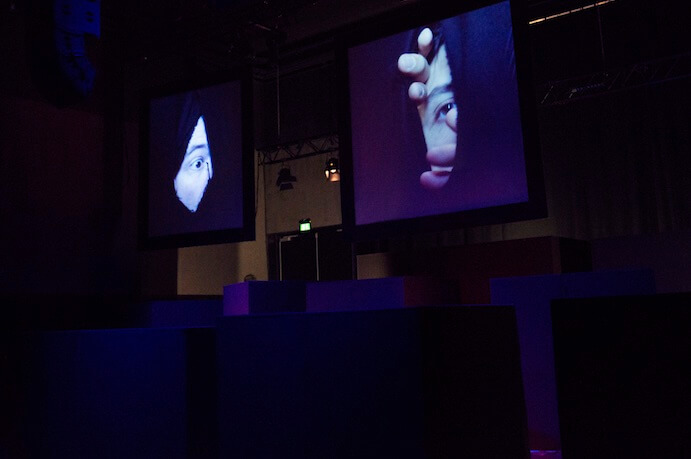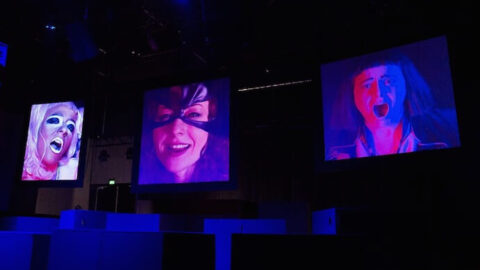SPOR is on a mission to prove that “music has the same potential for exploratory curation as all other art forms,” and the program for the 2017 festival certainly reflected this sentiment. However, an exploratory mindset can directly contradict the want to categorize art, a desire which still persists in an age where categorization is perhaps no longer necessary. Much of the contemporary classical music canon defies historically-defined genres, and composers such as Nico Muhly and Gabriel Kahane have vehemently spoken out against our obsession with categorization. Musicologist Will Robin’s PhD dissertation, “A Scene Without a Name: Indie Classical and American New Music in the Twenty-First Century,” begins to dissect the intricate generational, institutional, and social web that is today’s new music scene, but in the age of “indie classical,” is our preexisting terminology for classifying music still relevant? Do we need to broaden or redefine these parameters, or do we need a new vocabulary?
The 2017 SPOR Festival concluded with the Scandinavian premiere of German composer Brigitta Muntendorf’s iScreen, YouScream! (2016) for ensemble, actress, live video, and electronics performed by Muntendorf’s Cologne-based Ensemble Garage. The work, advertised as a “social media opera,” promised to explore the effects of obsessively curating our online lives while potentially neglecting our real lives. However, the main question it elicited for me was “what constitutes an opera?” In my opinion, the most fundamental definition of an opera is a “sung drama,” and while Muntendorf’s work contained singing, the majority of the work was not necessarily sung throughout.

The stage of the Åbne Scene theater at Godsbanen was crowded with three terraced rows containing a total of 11 large black boxes with three large screens hanging above the boxes. A loud exhale from the unseen ensemble signaled the beginning of this unique theatrical experience. Tension quickly builds at the onset of the work as swells and tremolos from the ensemble—comprised of flute, clarinet, saxophone, synthesizer, percussion, trombone, violin, viola, and cello—escalate to sharp releases. Flashes of faces on Skype and FaceTime appear on the three screens as the ensemble mimics and plays in rhythmic unison with digital samples that resemble a video rewinding. After a frenzied overture of video clips and fragmented musical interjections, the audience is introduced to the 10 individual characters inside the black boxes (the 11th box belonging to conductor Mariano Chiacchiarini).
Each character is played by one of the nine members of Ensemble Garage, with the tenth non-instrumentalist actress played by Constanze Passin. All of the stage action takes place inside the enclosed boxes and is only revealed to the audience on the screens via a cameraman who is continually scurrying between characters. Thus, the audience bears witness to each character’s attempt to curate and project their online persona without interacting with any of the other characters on stage. This output-only method of communication from within the physical confines of a box served as a powerful statement on the current condition of in-person human interaction and companionship in the digital age.

One-by-one, the audience is introduced to the individual characters, whose personalities are reflected by the accompanying score. A clarinetists obsessively narrates his actions and performs the same simple musical patterns over and over again. A saxophonist in Kanye shades plays a Doo-wop song on soprano and alto saxophone simultaneously. A percussionist layers and loops disparate musical lines that eventually combine to reveal the opening theme from Beethoven’s Symphony No. 5. A trombone bro makes a funk-inspired tutorial video, and the ensemble joins the hype with the occasional unison “Woo!” A fashionista cellist models a sparkly new bracelet by demonstrating how it shimmers when performing both pizzicato and bowed harmonics.
Suddenly, the lights went up on the audience as we found ourselves on the projection screens while the cameraman panned across the theater during the bopping electronic refrain between characters. Next, the actress, accompanied by a chaotic groove, angrily rants with her voice sped up and distorted to the point of incoherence, save a few profane interjections. The violinist is the first character to break out of her box as she unsuccessfully tries to initiate conversations with the other characters by echoing back verbal and musical phrases. The remaining characters include a growling, Screamo flutist, a leather-clad sex kitten keyboardist, and a singing violist dressed as a Japanese Ganguro girl.
At first, the question as to whether or not iScreen, YouScream! should be considered an opera might seem like a hyper-critical and trivial dissection of semantics, but it raises the issue of using antiquated terms with specific implications in order to describe exploratory art that is beyond categorization. Opera or not, Ensemble Garage’s musical and theatrical commitment to Muntendorf’s topical work made for a fitting close to a festival filled with experimental sound art.
























